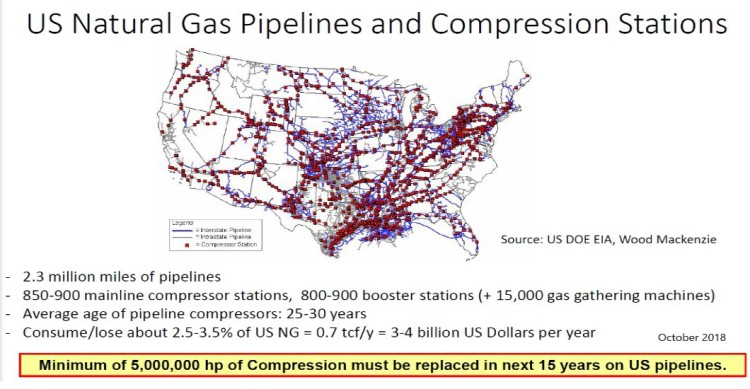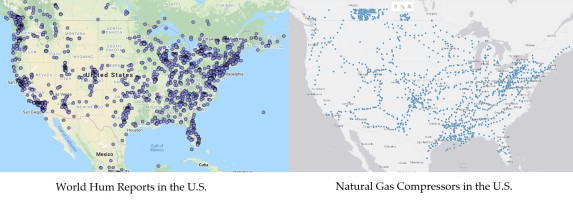
The Evidence
1.) Flutter and Hum -
Flutter and Hum explained
Industrial noise comes from a huge variety of sources. This includes things like generators and compressors. In addition, some forms of gas can get noisy when you transport or vent them. That is why
we design and supply first class natural gas silencers. To do so, we use special software to ensure our models can incorperate into your systems
One thing you might not be aware of is that pipelines produce noises that can negatively impact your health. Gas lines in particular
produce a phenomenon of low and extra-low frequency sound waves. They occur due to the transmission of high pressure natural gas through the set ups. These noises are referred to as flutter and
hum.
What is flutter?
This is a persistent pulsating airborne pressure wave. It can radiate from pipeline infrastructure. It is a problem that affects the immediate area. You will find that it sounds like the rumbling you can hear from distant thunder. It also feels like the pulsations originating from a helicopter that is flying in the distance.
The big issue is the sound can penetrate houses and feels like a vibration in your ears and head. Another place where you can feel flutter is outside as a discomfort because of interior organ resonance.
What about hum noise?
This is an invasive and persistent low frequency droning, rumbling, or humming. It is not audible to everyone. It tends to resonate in enclosed structures, causing vibrations/sounds between 1 and 50 hertz. Hum waves can move over 25 miles from their origin and expand over an area.
The hum is usually felt more than heard because it is a sputtering tonal noise. It is also an accompanying vibrotactile sensation. People often describe it like numerous intensities of idling diesel engines that are always operating outside their property. Little is known about hum, making it the more unsettling of the two.
In order to understand how Natural Gas is responsible for generating the vast majority of Hum reports around the world it is essential to have some knowledge of the scope and magnitude of this industry as a whole. The image below is one page of a Document prepared 6 years ago in 2018. It describes Natural Gas infrastructure in the United States.
It does not include new compression installs intended to take up the slack for power generation that was formerly accomplished with coal fired plants.
It does not include increased demand for energy due to population growth.
Nor does it represent the total horsepower required to gather and transports natural gas in the United States.
Something to consider is that even with incredible numbers like to ones shown in this Document, there have been very few successful noise complaints and even fewer ILFN prosecutions in the United States.
Given the amount of Pipeline and the astounding amount of machinery one must ask how this can possibly operate in complete silence? The answer is that it doesn't.
Best efforts by the Industry and equipment manufactures have certainly done an admirable job of keeping things quiet for the most part but in fact Governments and Regulatory bodies have stacked the deck in order to perpetuate a lie and protect something that nobody wants to admit.
Natural Gas Pipelines and Infrastructure emit infra sound and low frequency noise.
Without question that noise has come to be known as the Hum heard around the World. That is certainly not to say that it accounts for every reported case of the Hum. It is however responsible for a vast number of Hum reports.
3.) Why "the Hum" gets louder at night ?
One of the mysteries surrounding "The Hum" is why does it seem to get louder or be more prevalent at night or in the wee hours of the morning ?
This is a question I have had difficultly resolving until I discovered a process known as "Line Packing" that is employed with natural gas pipelines.
What is Linepack ? Since natural gas is compressable is it possible to continue to pump natural gas into a pipeline during times of low demand to increase the amount of gas available when demand
rises. This usually occurs in a 24 hour cycle for natural gas pipelines that feed natural gas powered electric generation plants. With the reduction in the number of coal fired plants this is
becoming the standard. At the end of the day when people head off to bed and the demand for electricty falls the people responsible for supplying natural gas to the power plant will pump natural gas
thoughout the night in order to ensure a maximum supply of natural gas to the power for the morning when people wake up and demand rises again.
Some people may notice the regularity of this 24 hour cycle which is known as a gas day in the industry. The Gas Day not only provides a way to set daily demand volumes. It also serves in the
accounting of how much gas is moved during a particular time period.
Where I live the Gas day begins each morning. The people who are resposible for supply gas to power plants usualy start to increase line pack between midnight and 3 am. By 4 am the ILF noise levels
are at a maximum and remain high until demand rises and consumes the line pack at which point everything quiets down again only to repeat again the next night. The usual time for things to quiet down
is around 4 pm into early evening.
There are exceptions and times when "line packing" doesn't seem to follow a daily cycle for example undergroud storage or large gas nominations. If you are filling an
underground storage cavern there would not be a daily rise and fall in demand or if you are filling a large gas nomination ( think of this as an order for a large volume of gas to be shipped down a
pipeline ) again there would not be a daily rise and fall in demand.
Obviously another reason that ILF noise also known as natural gas pipeline flutter is more apparant at night is the natural occurance of everything quieting down at night. Traffic slows and the birds
stop chirping and even cattle are quiet at night. Certainly the pulsations of pipeline flutter will become more apparant and noticable.
The process of "Line Packing" natural gas pipelines explains why the Hum is louder at times and particularly louder at night.
4.) Much in the same ways as the designers of the The RMS Titanic played a role in her sinking, the designers of natural gas pipeline and
infrastructure have contributed to the Hum heard around the world.
The Document below contains a detailed description of how much consideration the Oil and Gas Industry has given to the potential for Pipelines and Compressors to generate low frequency noise
and Infrasound.
The Hum
The Hum is a detailed explanation of how an entire Industry failed to address the issue of low frequency noise and infra sound in the design of Pipeline Compressors and Equipment.
TheHum-1.pdf
Adobe Acrobat document [2.0 MB]
5.) The Hum is also prevalant where ever natural gas is being produced.
Not long after I started to look for the explanation for the World Hum someone told me about a Website and Database that contains accounts of "The Hum"
After my examination of the World Hum Site on a number of occasions I began to notice a corellation between reports of The Hum and a map of Countries that produce natural gas. Above is an illustraion of Australia's Pipelines and natural gas production facilities. As you can see there is a concentration of Hum reports in the areas where there is activity.
The image on the right is a map of Hum reports from the World Hum database The image on the left is a Map of natural gas Compressors in the US. Keep in mind that Infrasound and low Frequency noise generated by pipeline compressors can travel along the pipeline and through the air for great distances due the the length of the sound waves.
More about the World Hum > Click here <
For more on the Hum please visit my other Sites
www.therealworldhum.com
and
www.therealworldhum.ca




